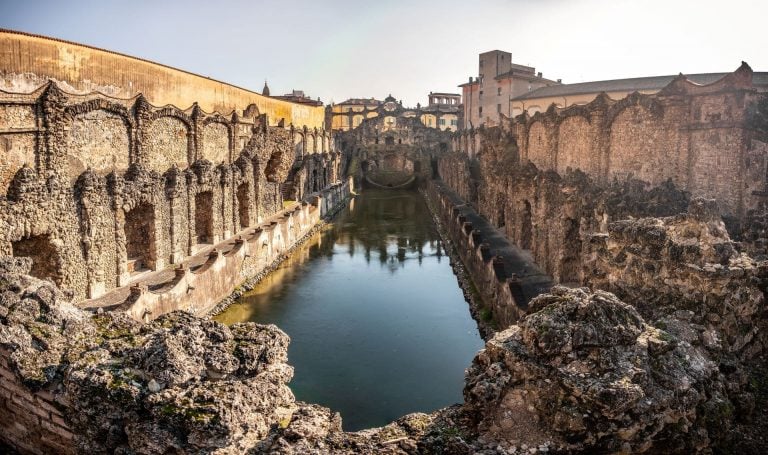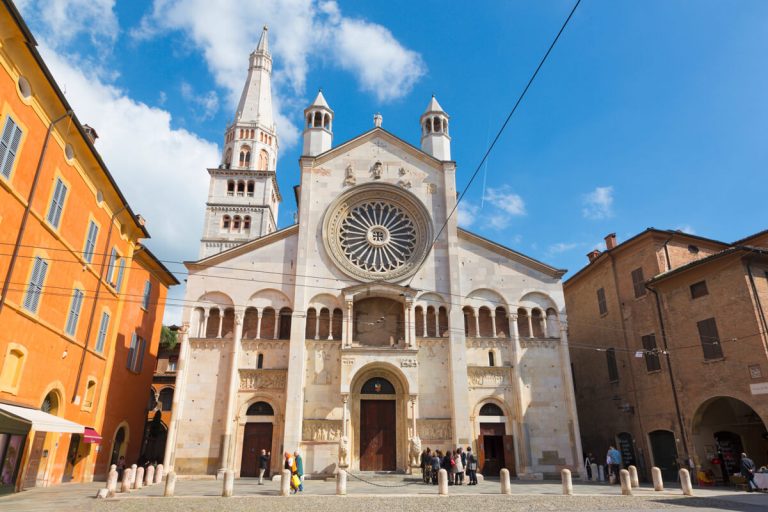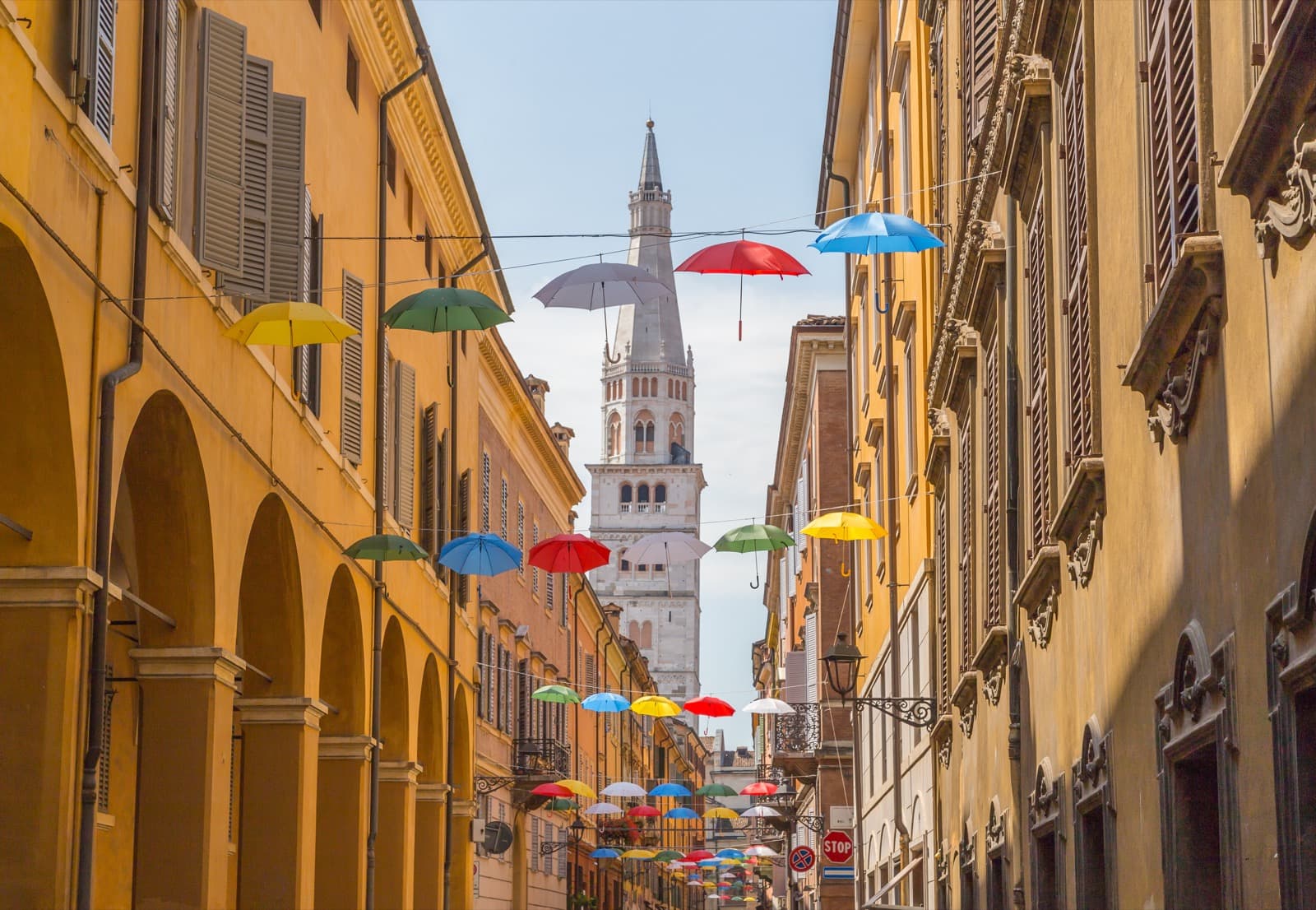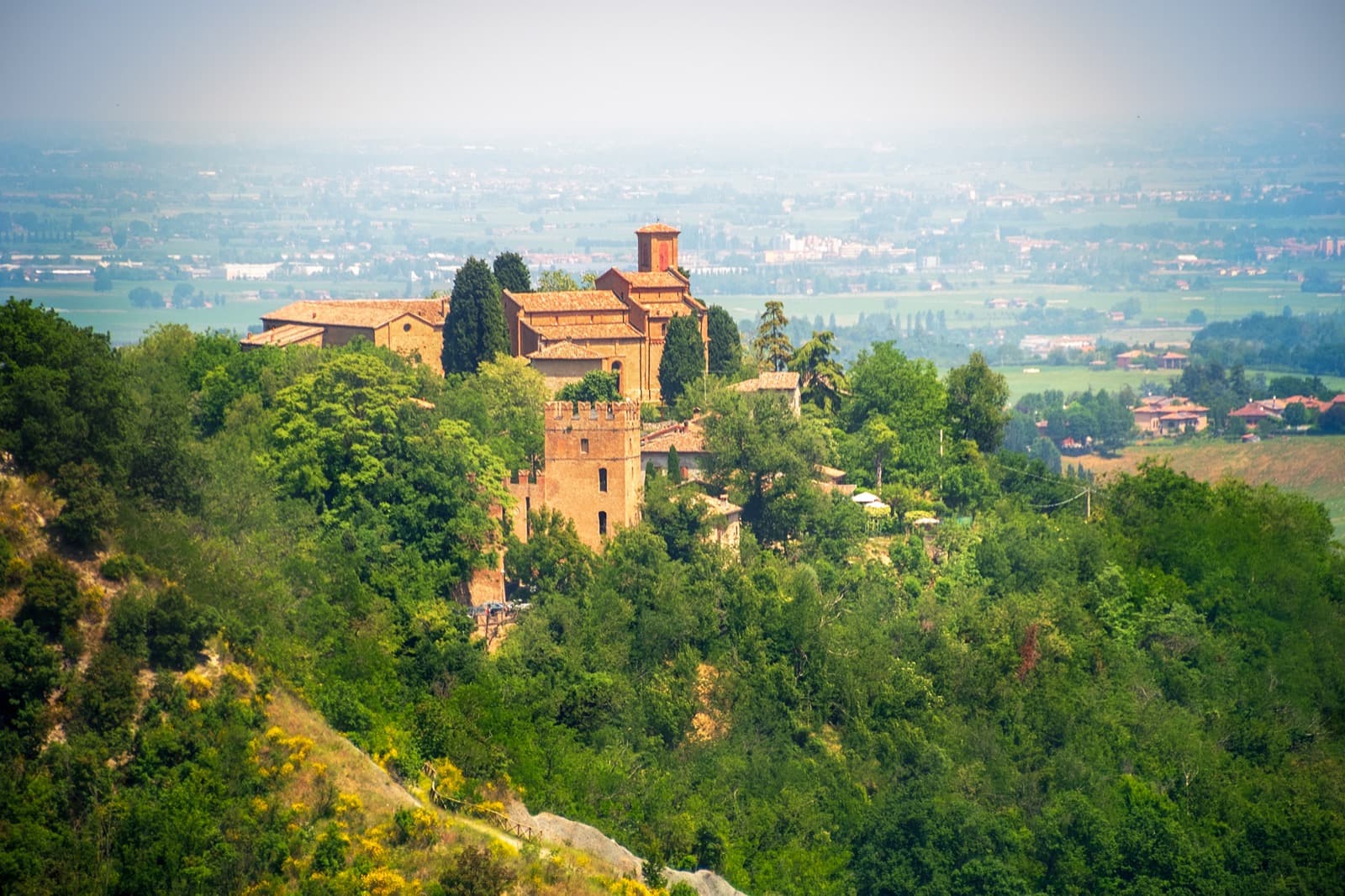A train journey through the Ducal Palaces of Modena, Sassuolo and Reggio Emilia
The area between Modena and Reggio Emilia preserves three extraordinary examples of ducal residences that bear witness to the prestige of the d’Este family:
- the Ducal Palace of Modena, an imposing Baroque residence in the heart of the city, which hosted the Este court between 1634 and 1859
- the Ducal Palace of Sassuolo, an out-of-town residence of the court, famous for its extraordinary frescoes;
- the Reggia di Rivalta in Reggio Emilia, considered one of the last Este Delights, immersed in the Reggio countryside.
This itinerary will allow you to discover these splendid historical residences, easily connected by the railway network of FER – Ferrovie dell’Emilia-Romagna (Modena – Sassuolo line and Sassuolo – Reggio Emilia line) and Trenitalia Tper.
First stop: Ducal Palace of Modena
The journey begins in the historic centre of Modena, where the first stop on our itinerary is the majestic Ducal Palace, one of the most imposing and prestigious residences in Europe.
The palace was built in 1634 at the behest of Duke Francesco I d’Este as the seat of the Este court, after the dukes were forced to leave the court of Ferrara and move to Modena in 1598.
Designed by the architect Bartolomeo Avanzini, with the collaboration of other famous architects of the time, the palace is a masterpiece of Baroque architecture that still enchants visitors today with its façade with three rows of windows and decorated with statues, its two-storey loggia and its elegant interiors.
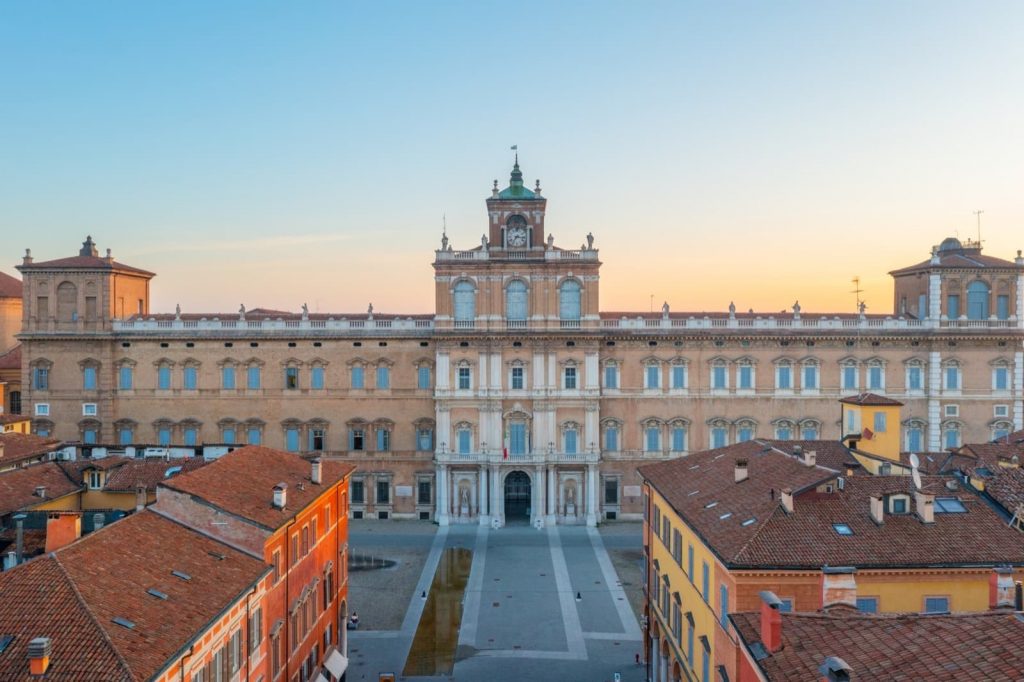
Residence of the Este court until the last Duke Francesco V of Hapsburg-Este (1859), the palace now houses the Military Academy of Modena and can only be visited with a guide (Saturday and Sunday by appointment: INFO).
After the visit and before going to the railway station, we suggest a short walk to the nearby Piazza Grande, declared a UNESCO World Heritage Site together with the Cathedral, a splendid example of Romanesque art, and the fascinating Ghirlandina Tower, symbol of the city.
Second stop: Ducal Palace of Sassuolo
The itinerary continues by train on the Modena-Sassuolo regional line, which takes about 40 minutes to reach Sassuolo. From the station, a 10-15 minute walk will take you to the second stop on our itinerary among the pearls of Este architecture in Modena and Reggio Emilia.
This is the Ducal Palace of Sassuolo, transformed in 1634 by Francesco I d’Este from an ancient castle into the summer residence of the ducal court.
A splendid example of northern Italian Baroque culture, it is famous for its spectacular frescoes painted by the best artists of the time, including the French official court painter Jean Boulanger.

On the walls and ceilings of the rooms, allegorical themes and episodes from the history of the House of Este are seamlessly combined, including mythological heroes, characters from classical literature and chivalry, all united to glorify the “good government” of the House of Este. Here are all the INFO for your visit.
Outside, the extensive green spaces of the Ducal Gardens and the Ducal Fishpond, the Este family’s evocative water theatre, can be visited when the Ducal Palace is open, except during bad weather.
Third stop: Reggia di Rivalta in Reggio Emilia
Taking the Sassuolo – Reggio Emilia line, it takes about another 40 minutes by train to reach Reggio Emilia. To complete the tour, our advice is to rent a bicycle and ride along the picturesque Crostolo Greenway, a cycle path surrounded by greenery that, with a ride of about 30 minutes, leads to the Reggia di Rivalta, home of Francesco III d’Este and Carlotta d’Orléans.
Considered one of the last Este Delights, i.e. the leisure and holiday residences of the Este court, this splendid 18th-century villa was part of a larger system that also included the Villa di Rivaltella and the Vasca di Corbelli.
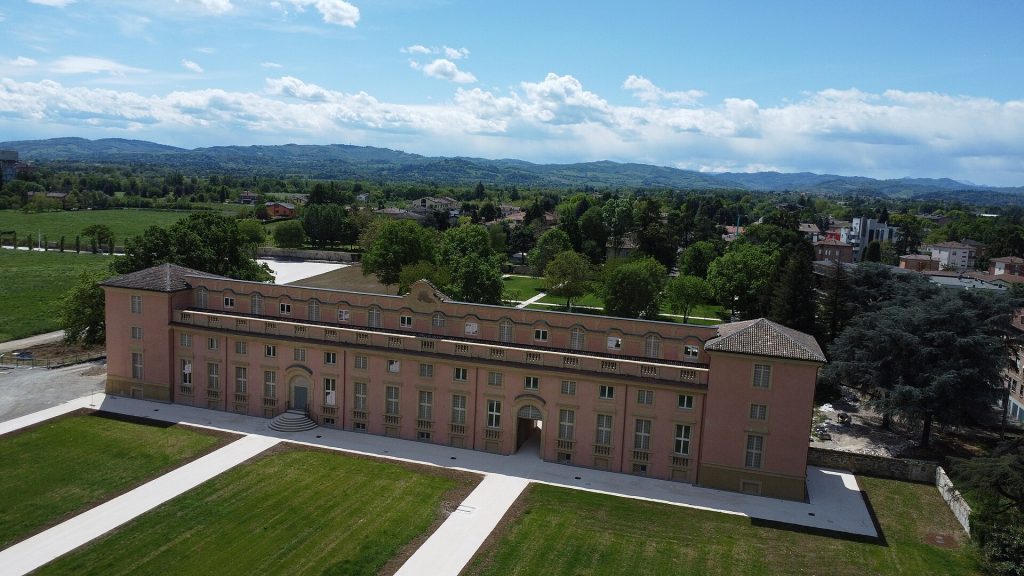
The construction of this “Little Versailles” of the Este family was entrusted first to the local architect Ferraroni and then to Bolognini (also the author of the Tricolore Hall in Reggio Emilia); the building, completed in 1733, experienced its golden age between 1740 and 1760, when it was the scene of grandiose festivities that echoed the Parisian splendour.
The villa can only be visited on the occasion of special events, but it is possible to admire it from the outside and then continue by bike to the nearby Villa d’Este – Vasca di Corbelli, an oval basin that collected the water necessary to supply the fountains in the garden of the Reggia di Rivalta; the basin can be visited during the opening hours of the social centre of the same name.
From here you can choose to continue cycling along the Crostolo Greenway towards the first hills of Reggio Emilia and reach the Pinestina Ecopark in Vezzano sul Crostolo in about 40 minutes, or return to Reggio Emilia to visit the city before taking the train home.
Author
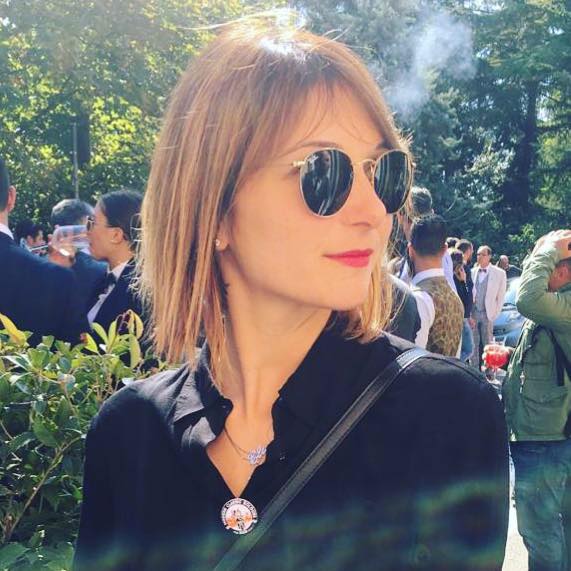
Elisa Mazzini
Social Media Manager for @inEmiliaRomagna and full-time mom.
You may also like
By train between villages and castles
by Elisa Mazzini /// December 23, 2024
Este palaces and residences between Modena and Reggio Emilia
by Maria Grazia Masotti /// July 13, 2023
Tales of stone. Visiting the Cathedral of Modena
by Maria Grazia Masotti /// November 28, 2024

Interested in our newsletter?
Every first of the month, an email (in Italian) with selected contents and upcoming events.
Emilia-Romagna for kids: Modena and surroundings
by Elisa Mazzini /// May 9, 2023

